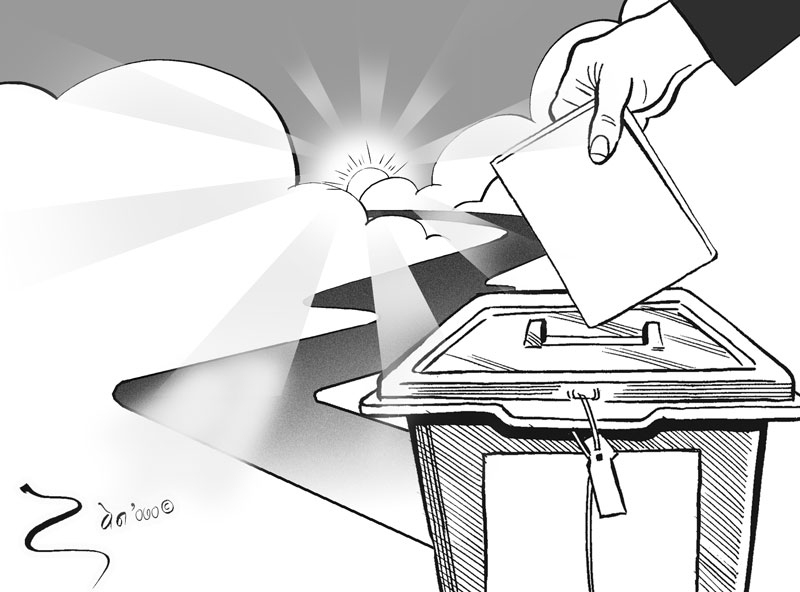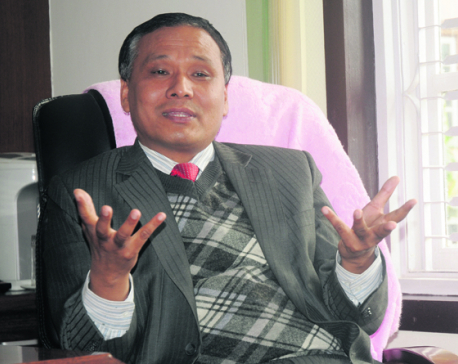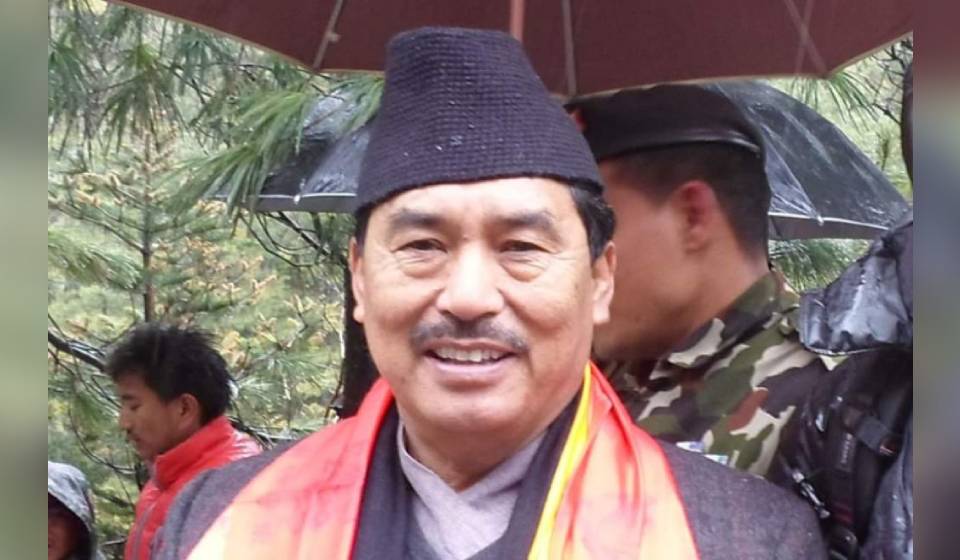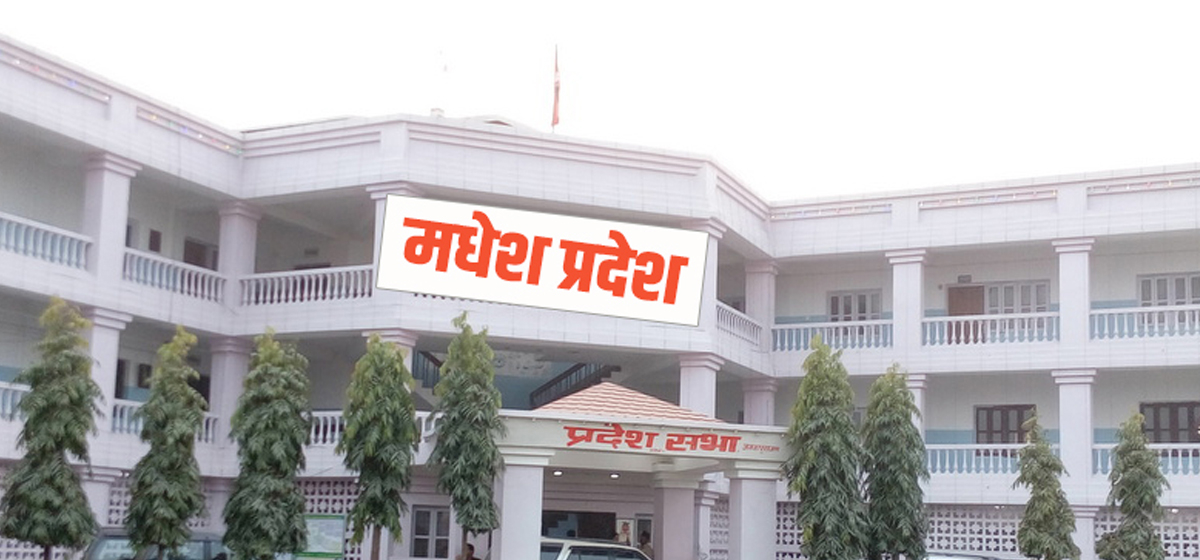
OR

Merits and demerits of federalism have been greatly exaggerated by their supporters and detractors alike.
While eagerly waiting for the third round of local elections to be followed by provincial and national elections in the coming months, most Nepalis are celebrating the successful holding of the first two rounds of elections under the new constitution. People of all walks of life participated enthusiastically in voting despite heavy monsoon rains, busy agricultural season and other obstacles. Expectations are high that after two decades of often chaotic and rebellious fervor, democracy is finally returning to the grassroots level where it is most needed and meaningful.
Democracy and development at the local level will pick up momentum if we can finally overcome the long-drawn, divisive debate about federalism in national political discourse and misrule by cartels and syndicates of unelected political party bosses and bureaucrats at the local level.
Nepal’s new constitution grants considerable authority for strong village and municipal governments. Supported by a substantial increase in their share of the national budget, the newly empowered municipal governments should be able to usher a new era of accelerated economic development and social progress throughout Nepal. However, the following risks and shortcomings will have to be overcome to institutionalize the gains of our new-found republican democracy and to avoid new forms of elite capture of political power and economic resources, especially at the regional and local levels.
Romanticism of federalism
The demand for federalism was partly inspired by the worthy objective of loosening the undue concentration of political power and economic wealth by a small privileged elite of upper-caste, upper-class feudal families in Kathmandu and some of their surrogates outside the capital. However, the merits and demerits of federalism have been highly exaggerated by their supporters and detractors alike. Nepal’s new constitution offers a prudent middle path.
A three-tier federalism adopted by Nepal allows maximum devolution of power to the local municipalities with seven federal states playing an intermediary coordinating role, to take advantage of economies of scale and to be responsive to regional peculiarities and aspirations. However, what exactly should be the role of federal states vis-à-vis central and local governments is rather vague and contested. There are some who argue for federal states to be the strongest units of policy and decision-making, and others who want most such powers to be vested closest to the people in local governments.
What we do not want is to redistribute the unfair concentration of power and perks from the control of a small privileged elite in Kathmandu to a few more small privileged regional elites in seven or more provincial headquarters. We should aspire for maximum devolution of such power to all Nepalis in an equitable manner. I believe this can be best done at the village and municipality levels where citizens have greater leverage in holding their elected leaders to account.
Some proposals for constitution amendment and draft bills in parliament to regulate inter-governmental fiscal transfers that seek to revert powers granted by the new constitution to locally-elected officials back to the central and provincial governments constitute, in my view, a retrograde step that should be avoided.
The poor performance of political parties demanding identity-centric federalism and claiming to represent the interests of the most marginalized communities, even in areas of their presumed strongholds, in the current local elections and in the previous national election for the second Constituent Assembly in 2013, shows the fallacy of their claim that there is widespread popular support for their agenda. Their success in mobilizing support for public protests and demonstrations is not matched by genuine popular support as reflected in votes cast using secret ballots in peaceful democratic elections.
We have seen in many federal states, including Pakistan, Nigeria, and even India, as well as Switzerland and the US, where provincial governments have often rolled back progress for women, children and certain minority groups by introducing or retaining many regressive policies and legislations such as the Sharia law, the death penalty, restrictions on family planning, voting rights for women, and even public health campaigns like polio eradication.
Whereas national governments, even autocratic ones, fear coming under the radar of international scrutiny and feel duty-bound to respond to international pressure to comply with universal norms of human rights such as equality, inclusion, non-discrimination, freedom of press and religion, etc provincial governments often feel less restrained. Our federal fancy should therefore be tempered with more wisdom and less romanticism.
The local rationale
Although I support maximum devolution of power to the local level, I believe the current number of 744 local government units agreed as a political compromise needs serious rethinking. This number is either too large or too small.
To effectively discharge the extensive powers granted to the local governments in the constitution, we will need to make huge investment in physical infrastructure and human resources that a country like Nepal cannot afford or sustain. Nepal would be better off if we reduced the number of local municipalities by up to 50 percent, to around 300, as originally recommended by the local government restructuring commission.
Alternatively, the number of local municipalities should perhaps be doubled to around 1,000+ to get basic social services even closer to the people, particularly in the more remote and inaccessible areas of the country. In such a scenario, certain technical and administrative services for which ordinary citizens do not need frequent access but that are important for national or regional policy making, coordination and accountability purposes, could be shared among several neighboring village councils and municipalities.
Our aim should be to empower people, without creating too big or too many government bureaucracies.
Yet another reason for revisiting both the current number and delineation of local municipalities is that they were agreed to as political compromise based on short-term electoral considerations by today’s major political parties rather than being based on long-term developmental needs or potential. The boundaries of many current village municipalities and the proposed location of their headquarters do not follow the logic of such basic considerations as the region’s natural watershed, transportation grids, and access to secondary markets and referral services which might be outside one’s own municipality.
To avoid rivalry among several old VDCs, which now comprise a larger municipality, there are many proposals to establish brand new municipal headquarters in places without any existing infrastructure. This may be good for contractors and brokers who will see a profitable construction boom, but not necessarily for ordinary citizens who are more interested in direct services for themselves rather than fancy office buildings, vehicles and perks for government bureaucrats and politicians.
This is second of a three-part article on emerging national politics following the two phases of local elections.
The author is a former senior UN official and writer of ‘Lost in Transition: Rebuilding Nepal from the Maoist mayhem and mega earthquake (2015)’
You May Like This

Five hundred people were poisoned in Syrian gas attack that killed 43 people including children: WHO
Up to 500 people were poisoned in the Syrian gas attack that killed 43 people including children, the World Health... Read More...

NEA warns of power blackouts in Lalitpur if power theft not stopped
KATHMANDU, Feb 2: Nepal Electricity Authority (NEA) Managing Director Kulman Ghising has warned that the electric utility could cut off... Read More...

Sunkoshi Hydro Power Project starts generating more power
CHAUTARA, Sept 4: The Sunkoshi Hydro Power Project, which was partially damaged during a monsoon-triggered flooding in the Bhotekoshi River... Read More...





Just In
- Clash erupts between police and agitating locals in Dhanusha, nine tear gas shells fired
- Abducted Mishra rescued after eight hours, six arrested
- Forest fire destroys 13 houses in Khotang
- First meeting of Nepal-China aid projects concludes
- Lungeli appointed as Minister for Labor and Transport in Madhesh province govt
- Bus knocks down a pilgrim to death in Chitwan
- One killed in tractor-hit
- Karnali Chief Minister Kandel to seek vote of confidence today















Leave A Comment